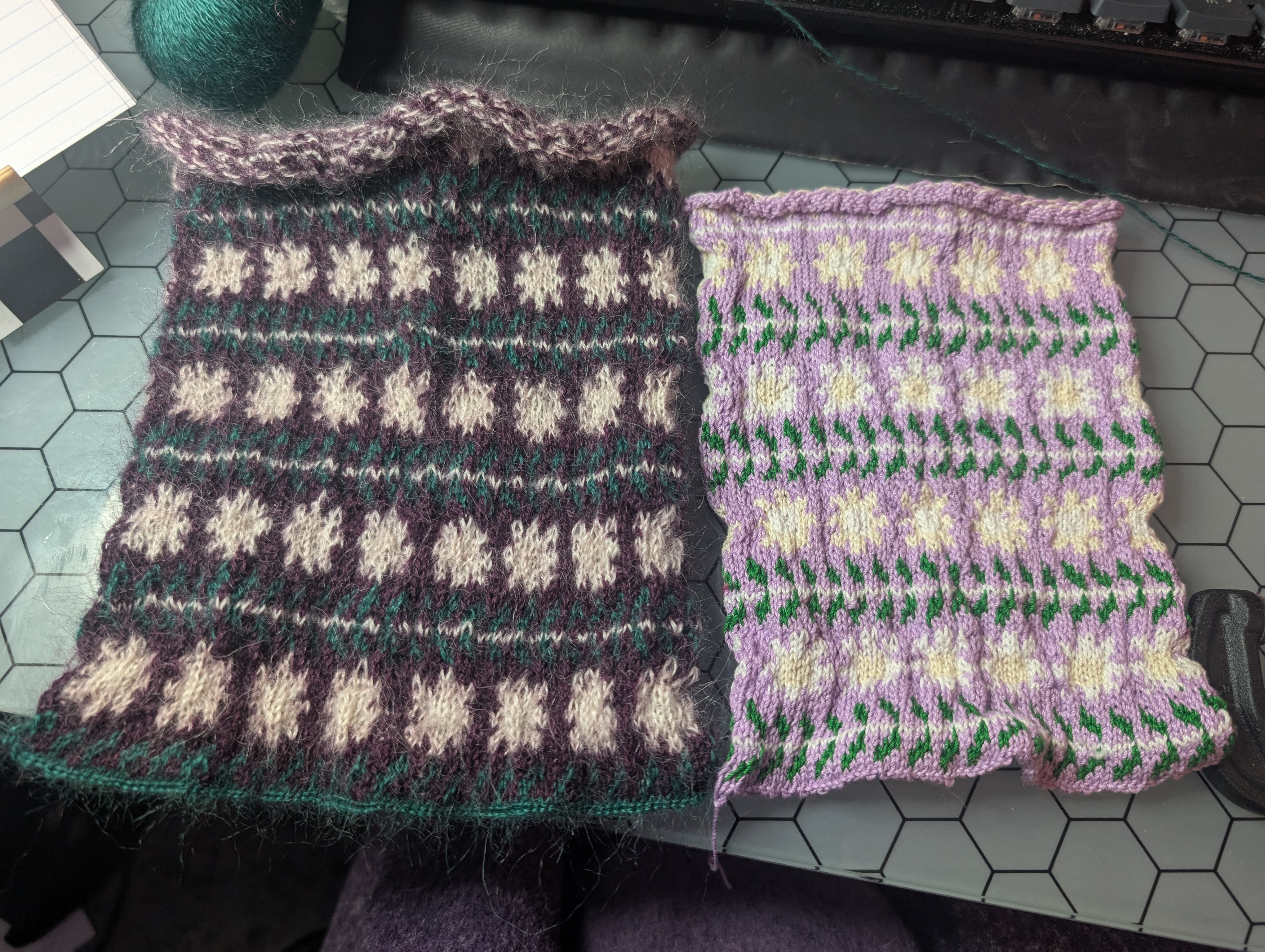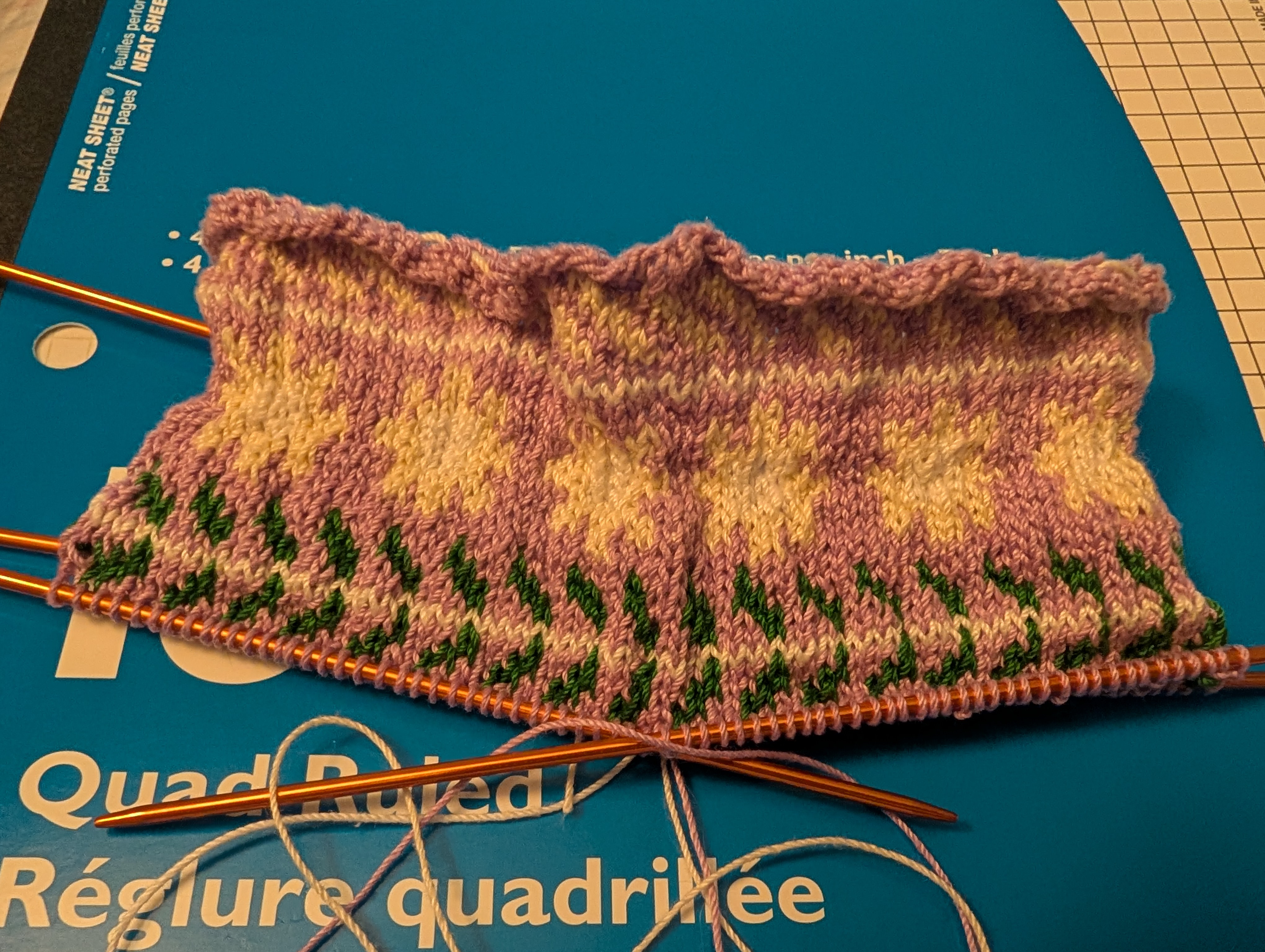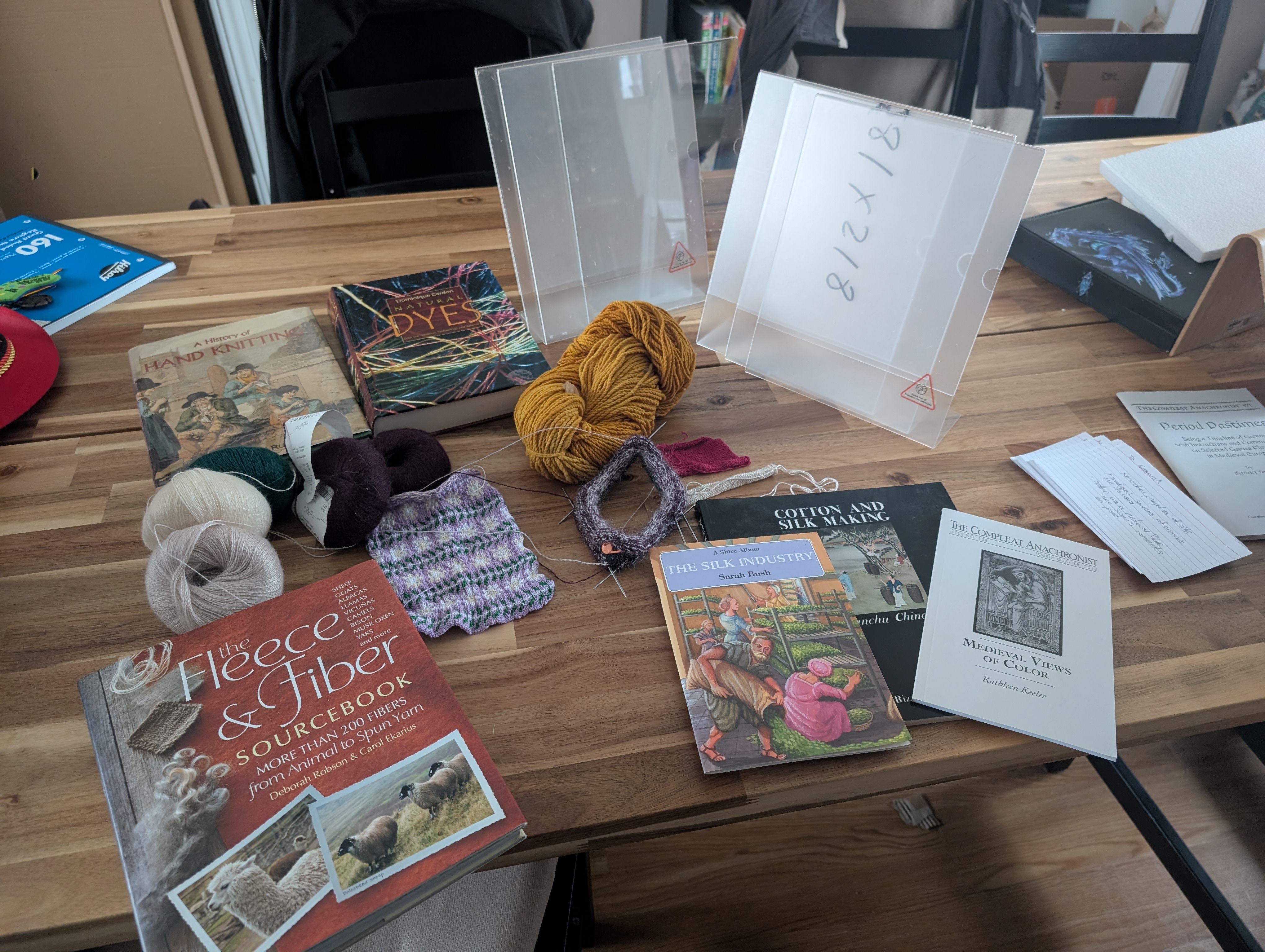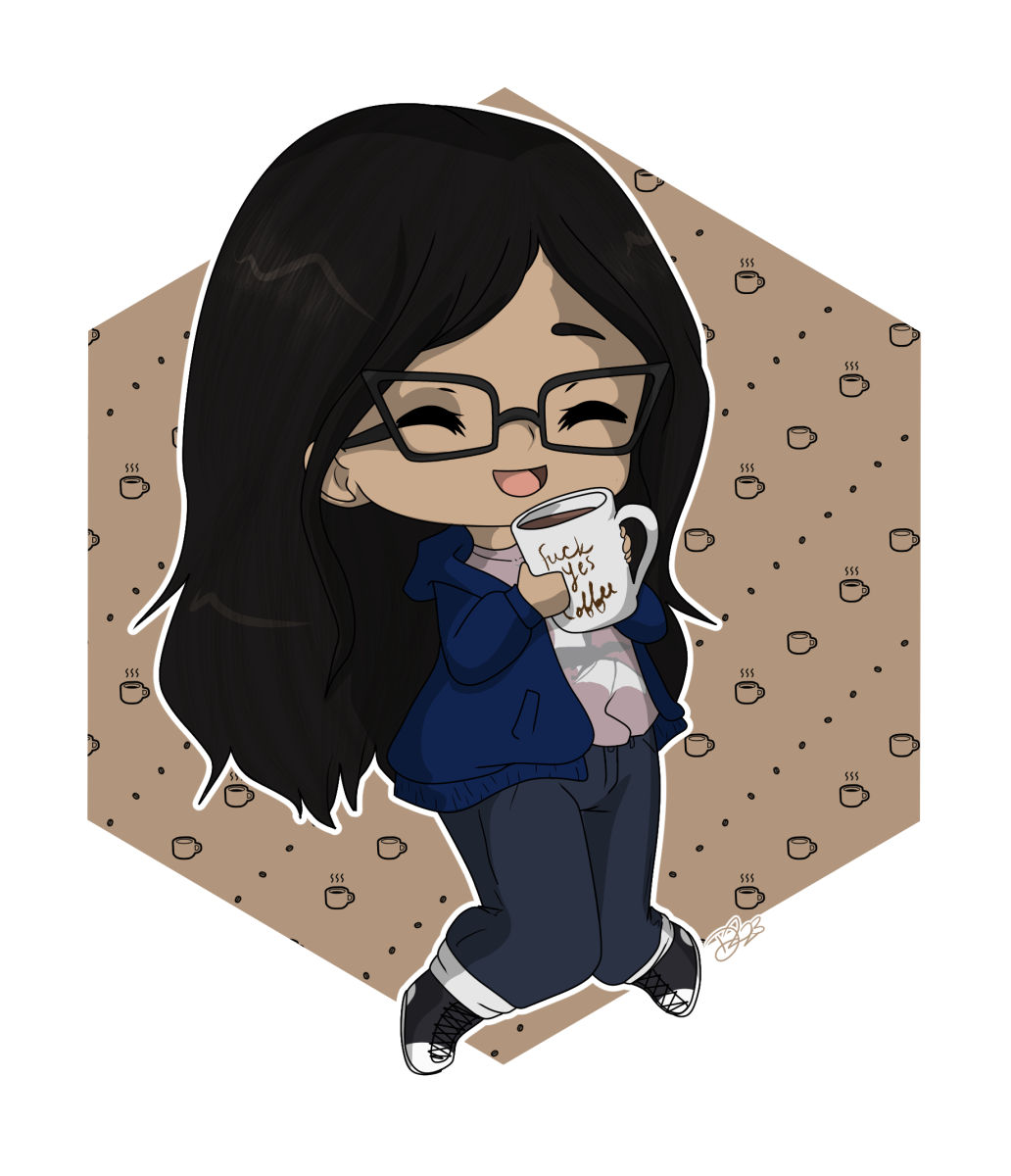For the 2025 Feast of the Hare, I decided to enter into the Baronial Arts and Science competition. I only had a few months to put together a project, so I fell back on my old comfort projects of knitting. (For those wondering, I will never enter a competition with my coffee research). I opted to make a reliquary bag based on one of the patterns from the extant examples found in the treasury of the Scion Cathedral. There is a theme for this year's Feast of the Hare: Bring the Stars. Since reliquaries often depict religious iconography, having celestial bodies on the reliquary bag was common practice, as shown by the extant pieces. I proceeded to make a bag using the pattern of Scion Purse IV, using cotton. While sharing my progress on social media, I received several messages from Laurels that I would "lose points because I wasn't using silk" and that "cotton wasn't a period material."
First off, cotton was very much a common material in the Middle Ages, especially in Asia and the Near East. Cotton had been used by Egyptians for centuries, as seen by stockings that have survived in burial sites. Second, reliquary bags were made by the materials that were on hand. For a wealthy noble that joined the Church, and the Church itself, having access to valuable silk and wool silk blends was perfectly normal.There are six purses presumed to have been knitted by the same person found in the Church treasuries, five made of silk, one made from a silk and wool blend. However, other fibers existed during the time period, including cotton, linen, wool, mohair, and hemp.
Plant fibers break down and compost faster than animal fibers, so having fewer remaining examples surviving to modern day makes sense. There is also the human factor that archeologists, up until the last few decades, did not see value in the fibers found in burial sites or excavations. Many articles were thrown out or destroyed in the process of creating museum displays.
So I made two bags based on the surviving extant. I did not make an exact replica, but bags that could have existed in the Middle Ages. The other part of the competition is to create an item that affects one or more of the sense: Sight, sound, taste, touch, and smell. I put together samples of different materials that could have been used to create reliquary bags that people may touch, samples of dye materials that may not have been available in Europe in the Middle Ages, but are used to dye materials. It would be impossible to recreated the dye material of the violet colour of the original bag, since the molloscs and lichens commonly used during the time period are critically endangered. The display fills the visual requirement with two bags covered in stars. The bags themselves fulfills their Excellencies request to bring them the stars, as I will be gifting the Baroness the cotton bag. And the display is interactive that people can touch and feel the different materials, including smelling samples of Medival dyes ingredients. Below are several pictures of the creation process that I had documented as I made the bags.





